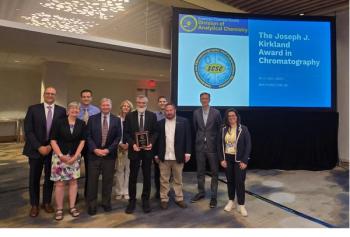
- The Column-03-20-2014
- Volume 5
- Issue 10
LC–MS–Based Methods for Identifying Drugs of Abuse in Oral Fluids for Forensic Toxicology Applications
This article reviews key developments and potential advantages of using LC–MS for forensic toxicology, including the option of using oral fluid samples.
Forensic toxicology screening methods are widely used to test biological samples for the presence of pharmaceutical drugs as well as drugs of abuse and their metabolites. Screening has most commonly been performed on urine or blood samples, using immunoassays or gas chromatography coupled with mass spectrometry (GC–MS). However, these methods have various limitations that include risks of false positives and false negatives, lack of specif city, and limited throughput. Moreover, these methods are unable to keep up with continual developments relating to drug abuse. For example, they are not suitable for detecting drugs from numerous different classes simultaneously, and are not always easy to adapt for detecting new drugs. In recent years, forensic toxicology laboratories have begun developing liquid chromatography–mass spectrometry-based (LC–MS) methods for drug screening. This article reviews key developments and potential advantages of using LC–MS for forensic toxicology, including the option of using oral fluid samples.
Articles in this issue
over 11 years ago
A New Frontier: NanoLC–NanoESI–MS in Astrobiologyover 11 years ago
Novel Passive Sampling Using Silicone Wristbandsover 11 years ago
A Look to the Futureover 11 years ago
Growing Fruit — and Economiesover 11 years ago
Fluoride Analysis of Ice Cores Using Fast Ion Chromatographyover 11 years ago
Vol 10 No 5 The Column March 20, 2014 North American PDFover 11 years ago
Vol 10 No 5 The Column March 20, 2014 Europe and Asia PDFNewsletter
Join the global community of analytical scientists who trust LCGC for insights on the latest techniques, trends, and expert solutions in chromatography.





